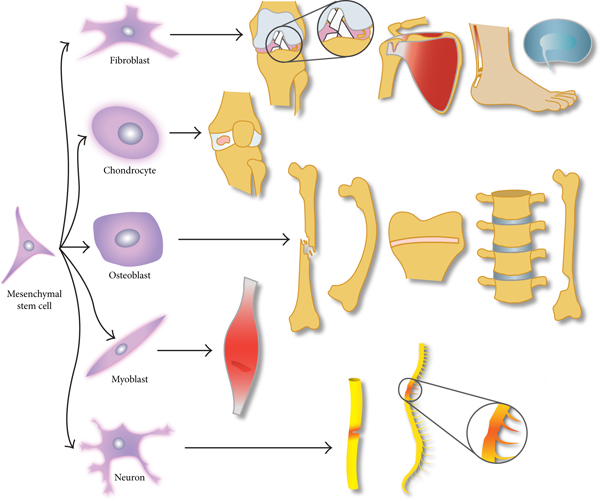
Stem cells have garnered significant attention in the field of orthopaedics in recent years, offering new avenues for both treatment and research. These remarkable cells possess the unique ability to develop into various cell types in the body, making them invaluable in addressing orthopaedic conditions and advancing our understanding of musculoskeletal health. In this article, we will explore the multifaceted role of stem cells in orthopaedics, shedding light on their applications in treatment and their vital contributions to ongoing research.
What are the orthopaedic Applications of Stem Cell Therapy?
Stem cell therapy has emerged as a game-changer in orthopaedics, offering innovative approaches to treat a range of musculoskeletal conditions. Some key orthopaedic applications of stem cell therapy include:
- Osteoarthritis Management: Osteoarthritis, a degenerative joint disease, can cause pain and reduced mobility. Stem cell therapy has shown promise in regenerating damaged cartilage, potentially delaying the need for joint replacement surgery.
- Bone Fracture Healing: Stem cells can be used to accelerate bone healing in cases of fractures or non-union fractures, where the bone fails to heal properly.
- Tendon and Ligament Repair: Stem cell-based treatments are being explored for repairing damaged tendons and ligaments, common injuries in athletes and active individuals.
- Spinal Fusion: In spinal surgery, stem cells can promote bone fusion, enhancing the stability of the spine after surgery.
- Cartilage Repair: Stem cells are being used to regenerate cartilage in joints like the knee, offering hope for those with cartilage defects.
- Reducing Inflammation: Stem cells can have anti-inflammatory properties, making them valuable for conditions characterized by inflammation, such as rheumatoid arthritis.
Stem cell therapy in orthopaedics often involves the extraction of a patient’s own stem cells, followed by their careful application to the affected area. This minimally invasive approach can lead to improved outcomes and reduced recovery times.
What is the Role of Stem Cells in Research?
Stem cells play a pivotal role in advancing orthopaedic research in several ways:
- Disease Modeling: Stem cells can be used to create disease models, allowing researchers to study orthopaedic conditions in a controlled environment. This enables a deeper understanding of disease mechanisms and potential treatments.
- Drug Testing: Stem cell-derived tissues can be used to test the efficacy and safety of new drugs for orthopaedic conditions, accelerating the development of therapies.
- Regenerative Medicine: Stem cells are at the forefront of regenerative medicine research, with studies focused on harnessing their potential to repair and regenerate damaged musculoskeletal tissues.
- Personalized Medicine: By studying a patient’s own stem cells, researchers can develop personalized treatments tailored to an individual’s unique biology, potentially improving treatment outcomes.
How are Stem Cells Used in Medical Research and Treatment?
Stem cells are used in medical research and treatment through various techniques and applications:
- Stem Cell Culturing: Stem cells can be cultured in the laboratory, allowing researchers to generate specific cell types for experimentation or transplantation.
- Cell-Based Therapies: Stem cell-based therapies involve transplanting stem cells or their derivatives into patients to facilitate tissue repair and regeneration.
- Tissue Engineering: Stem cells are used in tissue engineering to create functional replacement tissues for damaged or diseased body parts.
- Gene Editing: Advances in gene editing technologies like CRISPR-Cas9 enable precise modifications to stem cells for therapeutic purposes.
In the realm of orthopaedics, ongoing research aims to unlock the full potential of stem cells in promoting healing, reducing pain, and enhancing the quality of life for individuals with musculoskeletal conditions.
Read More about making better lifestyle decisions here
